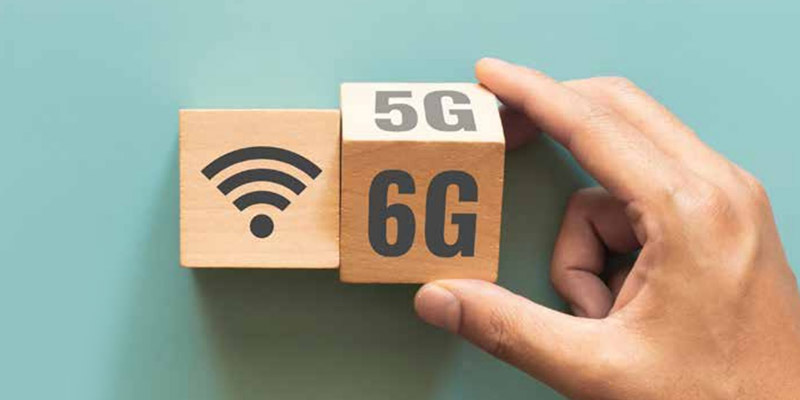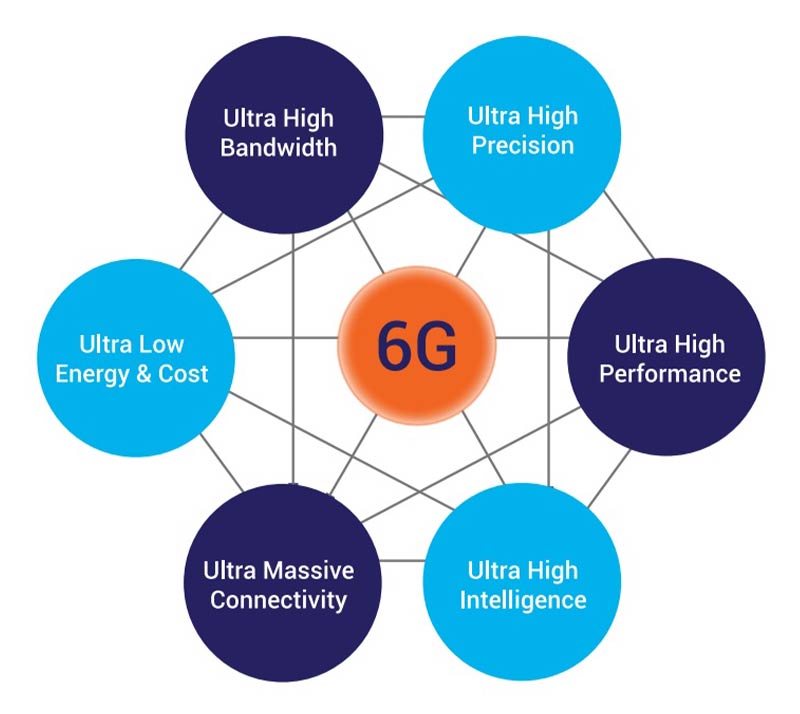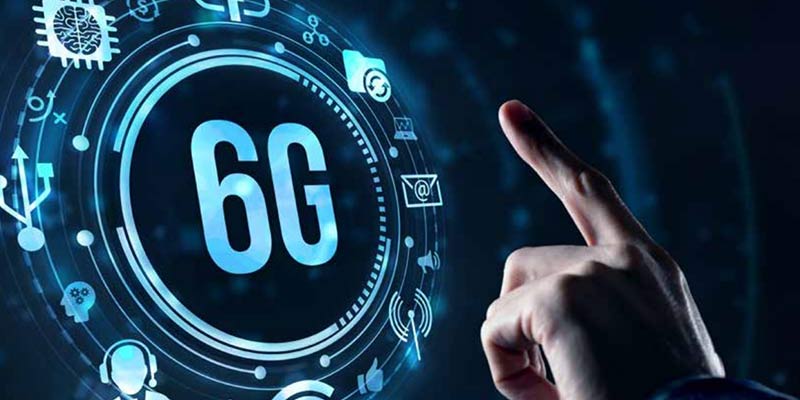- India
- Mar 23
Explainer - What is 6G network? What are its advantages?
• Prime Minister Narendra Modi unveiled Bharat 6G Vision Document and launched the 6G R&D Test Bed.
• PM Modi said India is one of the countries to have rolled out 5G mobile technology at the fastest pace. He said the services have been expanded to 125 cities within 120 days of the launch of 5G.
• The Bharat 6G Vision Document unveiled by the prime minister is prepared by Technology Innovation Group on 6G (TIG-6G) that was constituted in November 2021 with members from various ministries/departments, research and development institutions, academia, standardisation bodies, telecom service providers and industry to develop a roadmap and action plans for 6G in India.
• The 6G Test Bed will provide academic institutions, industries, startups, MSMEs, etc a platform to test and validate the evolving ICT technologies.
• The Bharat 6G Vision Document and 6G Test Bed will provide an enabling environment for innovation, capacity building and faster technology adoption in the country.
Ever evolving communication technology
• Roughly every ten years, the next generation of mobile communications network is released, bringing faster speeds and increased capabilities. The first generation (1G) of wireless networks brought the very first cellphones. 2G brought improved coverage and texting. 3G introduced voice with data/internet, and 4G long-term-evolution (LTE) delivered increased speeds to keep up with mobile data demand.
• The current cell-phone technology is the ubiquitous 4G which supports our current way of life by providing us with seamless streaming and gaming experiences.
• Each new generation provides an almost disruptive impetus to the state of technological advancement and spearheads societal change.
• At present, the total annual purchase of smartphones is greater than 16 crore smartphones for about 30 crore Indian households. This means that every household today is buying smartphones at an average of one phone every two years.
• Smartphones have evolved from being a means for calling, entertainment, snapping pictures and videos, payments, e-commerce, navigation, etc, to aiding the enhancement of livelihoods.
• During the last decade, more than 700 million Indians, representing 75 per cent of both rural and urban adult population, became users of mobile and fixed broadband services. Broadband connectivity has transformed lives and livelihoods, particularly of the poor.
• 5G is the fifth generation of mobile communications technology.
6G will build upon 5G technology
• As India embarks upon its own unique 5G journey, the global telecom sector has already initiated strides towards creating 6G or sixth generation communication technology as the next big thing on the communication horizon.
• Despite being at a concept stage, 6G is already making waves with its promise of unified human-machine and machine-machine connectivity and offers a glimpse of what lies in store for the world as the next decade draws closer.
• 6G will build upon 5G technology and provide more reliable, ultra-low latency and affordable solutions to enhance and drive new communication applications.
• Although technically 6G does not exist today, it is already conceived as a much superior successor to the widely anticipated 5G. It promises a world of unimaginable speeds, connective intelligence and a highly mature Internet of Things (IoT) model that will enable and empower automated cars and smart home networks and will heighten the already existing interplay between everyday life and the Internet.
• The global vision is to further transform connectivity to make big data analytics and holographic displays a norm when 6G technology is finally implemented in the 2030s.
6G will be 100 times faster than 5G
• The new 5G technology promises a speed range of 40 – 1,100 Mbps with the potential to hit maximum speeds of 10,000 Mbps through technologies such as millimeter-wave spectrum and beamforming.
• While 5G itself seems very futuristic as of now, 6G will offer ultra-low latency with speeds up to 1 Tbps that will amp up the machine-to-machine and human-to machine interactions to unprecedented heights and transform the development and use of virtual and augmented reality (VR/AR), mobile edge computing, Artificial Intelligence (AI), etc.
• 6G use cases will include remote-controlled factories, constantly communicating self-driven cars and smart wearables taking inputs directly from human senses.
• With latencies of less than a millisecond, it can revolutionise all interactions and change the way data is stored, processed and used in the future.
• In addition, 6G will also incorporate “sensing” as an inherent service which will also have a profound impact on the design and delivery of new technologies and services in diverse areas such as education, medicine and gaming.
Advantages of 6G
• These technological advances will impact not just user experience but also transform economies and lives everywhere. It will very likely include intelligent network management and control, and integrated wireless sensing and communication while balancing the potential consequent carbon footprint with reduced energy consumption and a myriad of sustainable and eco-friendly initiatives.
• Hyperconnectivity and advanced user experience delivered by 6G will improve and enable access to required information, resources (both virtual and physical), and social services without constraints of time and physical location.
• Broad deployment of 6G technology will reduce differences in regional and social infrastructure, and in economic opportunities, thereby providing alternatives to rural exodus and metro-driven urbanisation.
• 6G connectivity can help India to leapfrog to become a highly industrialised society. While the technology adoption improves productivity, and quality of life for rural and urban citizens, achieving leadership in the development of technology will create immense job opportunities in the country.
• New industry verticals will emerge driven by 6G technologies. These may include Vehicle to Vehicle (V2V) and Vehicle to Infrastructure (V2I) Communication across road transport, trains, airlines, personal, community and public transport sectors, holographic communications, tactile and haptic internet applications, telehealth including diagnosis, surgery and rehabilitation activities, extremely high-rate information access, connectivity for everything, convergence of networking and computing among others.
Global 6G scenario
• Given the impact it will have on lives, livelihoods, and productivity, it is important for everyone across the world, particularly those in growing economies, to ponder over what they would like 6G to deliver and how they can shape it to suit their needs. Many countries and consortiums are actively addressing this question through research efforts and realising their vision for 6G.
• A major effort in North America has been launched by the Next G Alliance of stakeholders who range from service providers and vendors to universities and startups.
• South Korea has outlined a 6G R&D Plan in the first phase running till 2025, for attaining global leadership, developing key original technologies, making significant contributions to international standards and patents, and building a strong foundation for 6G research and industry. A total of 14 Low Earth Orbit (LEO) satellites are proposed to be launched before the end of the decade.
• Europe has been in the vanguard of telecom research since the era of 2G. The European 6G Vision identifies key features of 6G. The overarching Vision is to ensure leadership in strategic areas and establish secure and trusted access to key technologies making Europe a sovereign, independent, and reliable source for 6G public and private network solutions and services.
• In Japan, the Integrated Optical and Wireless Network (IOWN) Forum has published its Vision 2030 white paper.
• Key developments in 6G have been identified and are being pursued in China.
• The global community has already begun exploring its potential in a bid to push the frontiers and stay abreast of the high-paced technological advancements in the telecom sector.
Manorama Yearbook app is now available on Google Play Store and iOS App Store




